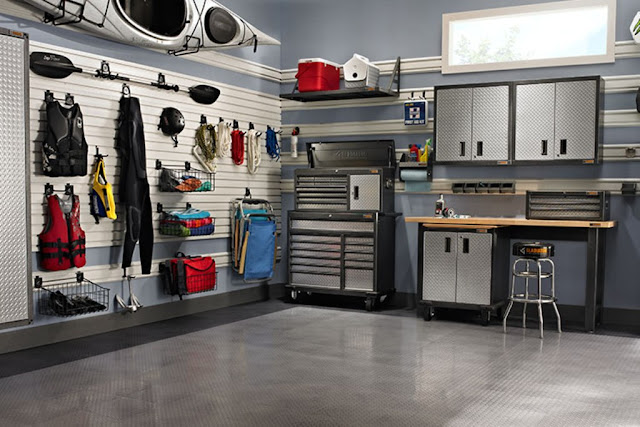A Guide to Buying the Ideal Work Bench
You don't have to be a gear head, expert handyman or DIY-er to appreciate a garage workbench. Workbenches are extremely versatile pieces of equipment that can serve as an efficient, sturdy, and most importantly safe workspace, regardless of your skill level, allowing you to work on any type of project. There are many different types of workbenches, and the ideal one for you will depend based on your personal needs and preference. That being said, consider how you intend on using the work bench. Will you use it for gardening, metalworking, woodworking, or something else? Will you need a heavy-duty model? Do you need a workbench with storage? Let's talk about the different types of work benches.
Workbench Tables
Workbench tables feature a hardwood or metal tabletop surface that stands on top sturdy metal or wood legs. This workbench is the most versatile and thus the most popular type of workbench due to its simple design, sturdy construction and affordability. The downside to these benches is that they don't provide much storage options, so you may need to buy separate cabinets or hang your tools and gear on the wall with nails. Most models offers at least a single open shelf beneath the table. Due to the fact that these workbenches have an open bays, they're suitable for tasks involving clamping and a vise grip.
Workbench Cabinets
Work bench cabinets solve the biggest issue of workbench tables - they offer an abundance of storage, making them ideal for people with lots of equipment and tools. The built-in storage options like shelving, cabinets and drawers provide for added convenience and easy access when working, which will increase your productivity. They're typically constructed of metal, and they're usually costlier than other types of workbenches. However, the investment can be well-worth as you might save a lot of money that you would otherwise have to spend on other storage solutions.
Pegboard Workbenches
Another type of workbench that offers a lot of function and organisation. These benches feature a peg board across the back where you can hang tools and equipment, as well as a backboard that can prevent tools and supplies from rolling off or falling down from the backside of the bench.
Portable Workbenches
These workbenches are easily portable wherever you need them. There are two basic types - rolling and folding workbenches. Folding models are small, collapsible and lightweight, but still provide enough space for most common jobs. Rolling workbenches offer a sturdy structure of conventional workbenches, except they have casters attached to the base or legs. These wheeled workbenches give you the ability to easily move the bench around and also place it securely whenever necessary.
Wall-Mounted Workbenches
These benches are suitable for small spaces or places with limited floor space. One benefit of these benches is that you can place them at whatever height you prefer for a more comfortable working environment. But one drawback is that these benches may not always be able to support the weight or wear and tear that heavy-duty, leg-supported benches can.
Workbench Width and Height
The height of the workbench is very important, the working surface on most models can be anywhere between 80 to 100cm height. Keep in mind that there are fixed and adjustable workbenches. The fixed models are more affordable but adjustable models can accommodate people of different ages, sizes and physical abilities, making them ideal when the bench needs to be used by multiple people. The work surface area is another important factors, and they can be anywhere from 60 to 300cm, so there's a large range to choose from. But bigger isn't always better. You don't need to get a 300cm workbench when a more compact one will do the job fine.
Workbench Materials
The materials the workbench is made of will impact its durability. You want a model with sturdy, solid legs or a sawhorse base for even weight distribution. Determine the type of tasks you'll be performing on the bench in order to figure out what the best material for you is. The most common materials are wood, steel and plastic. Wood workbenches are strong, and they can withstand a lot of weight, marring, heat and impact. These benches are usually made of solid maple, and are great for all-purpose work, including maintenance, repair and assembly. Plastic workbenches are lightweight, affordable and non-conductive, making them ideal for performing electrical work. So if you're going to be doing projects that include packaging, light assembly or office work, a plastic work bench will be suitable for the job. Steel models are the most durable ones and can withstand a lot of abuse thanks t o the underside reinforcements and strong welds. Heavy-duty steel like stainless steel is the best option if you're working with oil or solvents as steel is solvent spillage-resistant.





Comments
Post a Comment